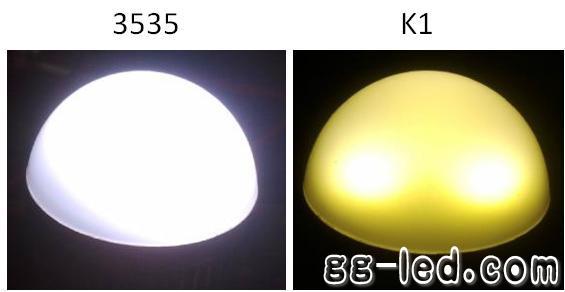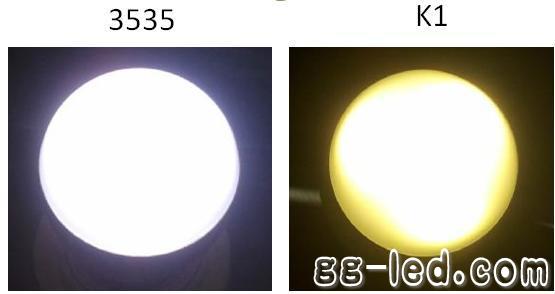As the brightness of the unit continues to increase, LEDs are becoming more widely used in the field of lighting. In order to continuously increase the brightness of the LED, it is inevitable to increase the area and power of the single lens, but this is accompanied by the generation of high heat.
Before the ceramic package was popularized, the K1 package form proposed by Lumileds has become a well-known product in the field of 1W (or above) LED. However, as the market demands for product characteristics, the packaging factory continues to improve its own products. The introduction of ceramic packaging methods using thin-film flat ceramic substrates and MOLDING to directly fabricate optical lenses has made the high-power LED packaging products an alternative. However, the timing of product verification in recent years has caused international companies to move closer to the direction of ceramic packaging. The reasons for this are worthy of careful consideration.
The biggest difference between K1 and ceramic packaging is the concept of design:
The biggest advantage of K is that it has a metal reflector structure, which makes the back-illumination efficiency of the LED epitaxial wafer fully applicable. However, the material in the structure of K1 is greatly different between the expansion coefficients, such as plastic and metal, lens and lead frame, etc. Under long-term high-power cyclic load, it may cause gaps in the material interface to make water and gas enter. . In outdoor lighting applications, the use of more complex environments, temperature differences, water vapor, and various gases brought about by environmental pollution, such as sulfur, have made K1's first comer encounter more challenges.
The design focus of ceramic packaging focuses on reliability. Using the high thermal conductivity of ceramics and metals, the heat generated by high power is quickly exported to the outside of the package. In addition, the difference in thermal expansion coefficient between the ceramic and the package, or the polymer (silica gel) of the primary optical portion of the ceramic is small. This reduces the risk of heat between materials. In addition, the primary optical silica gel is made of MOLDING support, integrally formed and covers the entire ceramic substrate, and has both optical and protective effects, so that the reliability of the ceramic package is much higher than K1. Of course, the ceramic package uses a thin film flat ceramic. The backlight of the epitaxial wafer can only be reflected by the planar metal, so the light use efficiency is lower than that of K1. However, since the body temperature of the ceramic package is lower, the effects of the two are combined, and the overall luminous efficiency difference between the two is different. Not obvious.
As for the comparison of production efficiency or other characteristics, as shown in Figure 1, as the ceramic package support continues to improve, the trend of K1 being replaced by ceramics seems to be more and more obvious.

Figure 1. Comprehensive comparison of K1 and 3535 ceramic substrate package products
In fact, ceramic packaging also has advantages in the design and use of lamps, taking the application of bulbs as an example:
Figure 2 shows the actual appearance of the 1W K1 and 3535 ceramic packages. It is obvious that the area of the ceramic package is more than three times smaller than K1, which gives greater flexibility to the arrangement of LEDs in the luminaire.

Figure 2. Comparison of the dimensions of the K1 and 3535 ceramic packages.
In addition, the height of the ceramic package is low, so on the same system board, the bulb made by the ceramic package can avoid the problem of dark areas, as shown in Figure 3 and 4.

Figure 3. Comparison of the dark areas of the 3535 ceramic package and K1 in the bulb (1)

Figure 4. Comparison of dark areas in the 3535 ceramic package and K1 in the bulb (2)
The support of ceramic package is different from that of traditional lead frame. Most of the products are supplied by leading factories in Europe and America. The domestic manufacturers are still in the stage of trial production. The company has completed the reliability test of all ceramic packages, and has launched a single package of 3014 and 3020 light-emitting products with a luminous efficacy of more than 10 lumens. It has set up a production line with a monthly production capacity of 6 KK, and is expected to expand to a monthly production of 30 KK in the future. The company will focus on high-power ceramic packaging and make ceramic packaging the best solution for lighting applications.








